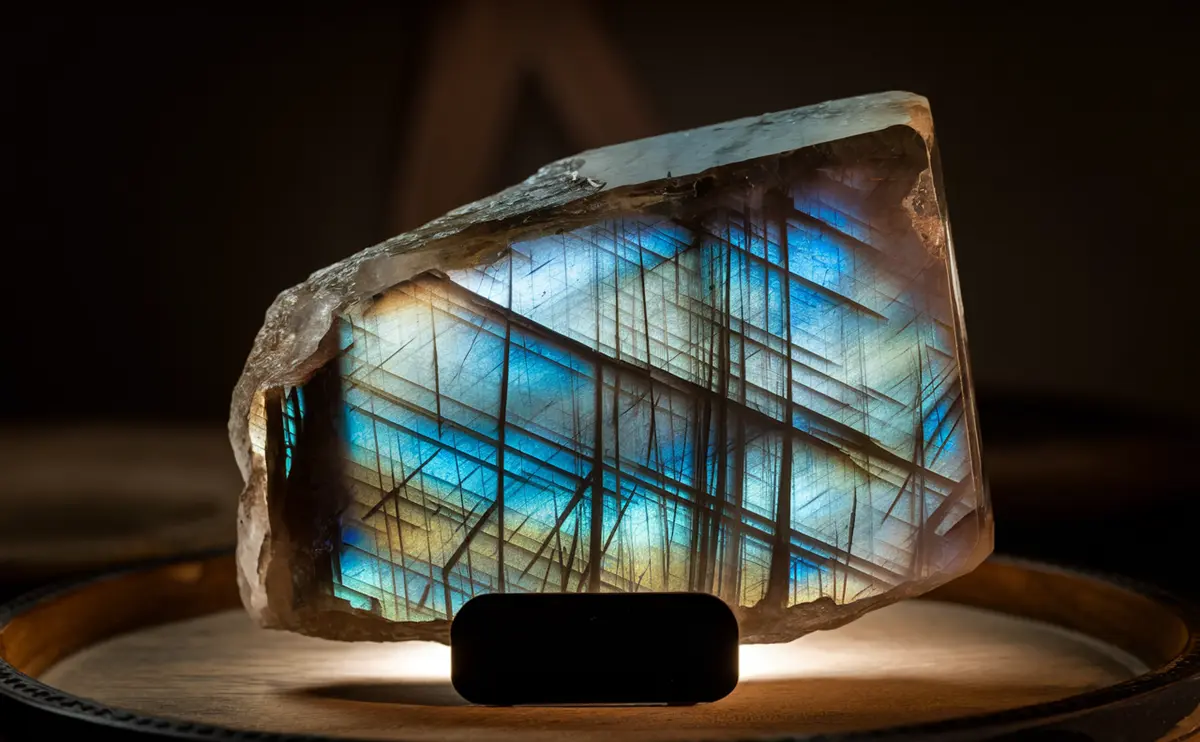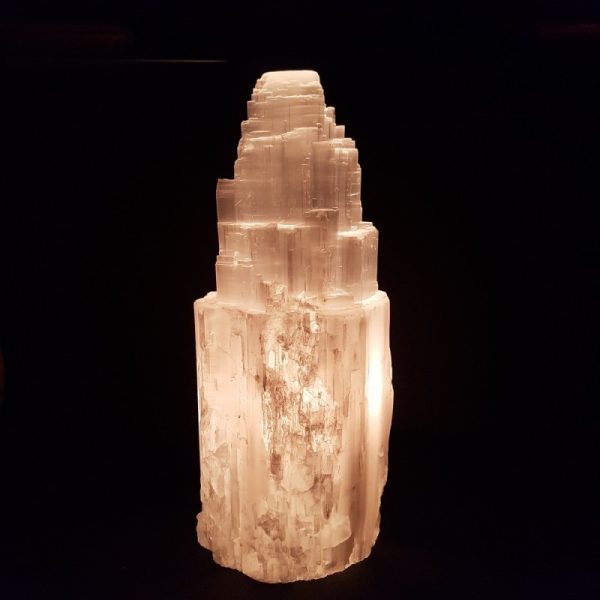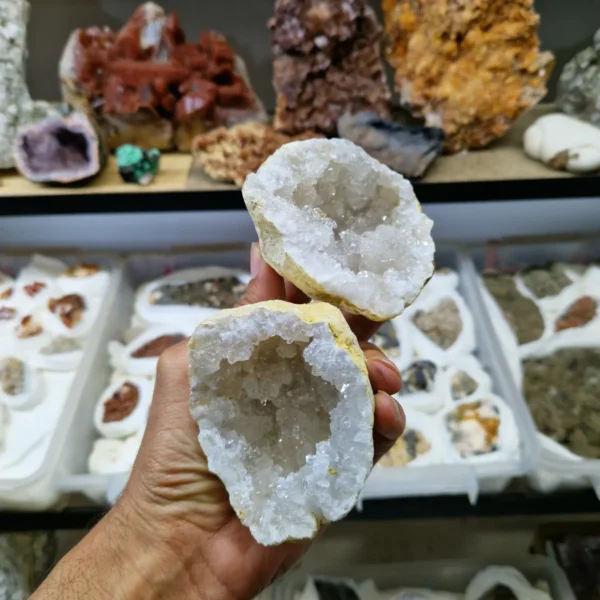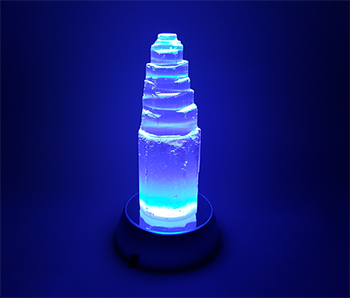Labradorite is one of the most visually captivating minerals in the world. Known for its spectacular play of colors often flashing blues, greens, golds, and sometimes purples, this feldspar mineral has become a favorite among collectors, jewelry designers, and geology enthusiasts. Whether you own a minerals shop, sell gemstones online, or simply love unique stones, understanding labradorite’s origin, composition, and practical uses can help you appreciate this fascinating mineral even more.
In this guide, we explore what labradorite is, how it forms, its varieties, how to identify high-quality pieces, where it’s mined, how to care for it, and the most common uses today.
Table of contents / Jump to
- What Is Labradorite?
- How Labradorite Forms
- Labradorescence: Understanding the Color Effect
- Where Is Labradorite Found?
- Varieties of Labradorite
- How to Identify High-Quality Labradorite
- Most Common Uses of Labradorite
- How to Care for Labradorite
- FAQ About Labradorite
What Is Labradorite?
Labradorite is a calcium-rich variety of plagioclase feldspar, a mineral group that makes up a significant portion of the Earth’s crust. It is best known for its optical phenomenon called labradorescence—an iridescent display of shimmering colors caused by light reflecting off internal layers within the stone.
Key Facts
- Scientific Name: Plagioclase Feldspar (Ca-rich)
- Chemical Formula: (Ca,Na)(Al,Si)₄O₈
- Hardness: 6–6.5 on the Mohs scale
- Luster: Vitreous
- Color: Gray to black body color with flashes of blue, green, gold, orange, or purple
- Optical Effect: Labradorescence
How Labradorite Forms
Labradorite forms in igneous rocks, especially in:
- Basalt
- Anorthosite
- Gabbro
- Norite
As these rocks cool slowly deep underground, the crystals develop internal lamellae—thin layers that cause the stone’s famous color flashes. When light passes through these microstructures, it scatters and reflects different wavelengths, creating the vibrant effect seen on polished surfaces.
Labradorescence: Understanding the Color Effect
Labradorescence is the signature feature that makes labradorite so desirable.
How It Works
- Light enters the stone
- It hits internal twinning planes
- The light is refracted and reflected at different wavelengths
- The viewer sees intense iridescent colors
Most Common Colors
- Blue: The most popular and widely available
- Green: Often mixed with blue flashes
- Golden/Yellow: Less common
- Orange/Red: Rarer and highly valued
- Purple: Extremely rare and sought after
The broader and more intense the color flash, the more valuable the labradorite.
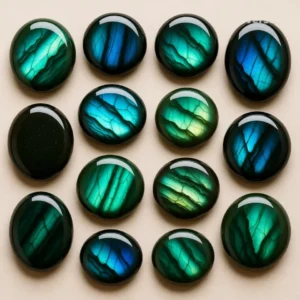
Where Is Labradorite Found?
The mineral was first discovered in Labrador, Canada, which gave it its name. Today, it is found in several parts of the world.
Major Sources of Labradorite
- Canada – historic and high-quality specimens
- Madagascar – known for colorful, premium-grade material
- Finland – source of the famous variety, Spectrolite
- Russia
- India
- Mexico
Madagascar and Finland currently produce some of the finest labradorite available on the market.
Varieties of Labradorite
1. Classic Labradorite
- Displays blue and green labradorescence
- Common in jewelry and carvings
2. Spectrolite
- Origin: Finland
- Known for full-spectrum colors including bright reds and purples
- Considered the highest quality and most colorful variety
3. Black Labradorite
- Darker base color
- Popular for polished cabochons and decorative objects
4. Oregon Sunstone Labradorite
- A labradorite feldspar found in Oregon
- Sometimes shows aventurescence due to copper inclusions
How to Identify High-Quality Labradorite
When buying or evaluating labradorite, use these criteria:
✅ Color Intensity
Brighter flashes with broad coverage increase value.
✅ Angle Visibility
High-quality labradorite shows color from multiple viewing angles.
✅ Surface Quality
Fewer cracks, chips, or dull areas typically indicate better quality.
✅ Cut and Polish
A good polish enhances labradorescence and reveals more color.
✅ Size and Shape
Large specimens with strong color are especially desirable for collectors.
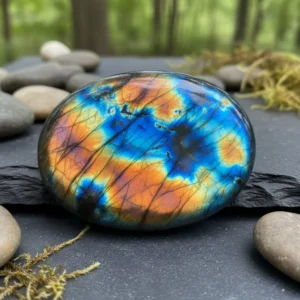
Most Common Uses of Labradorite
Even without considering metaphysical beliefs, labradorite has many practical and aesthetic uses.
1. Jewelry
Labradorite is widely used in:
- Rings
- Pendants
- Earrings
- Bracelets
- Beaded necklaces
Its durability and eye-catching flashes make it a favorite for artisan and handcrafted jewelry.
2. Decorative Objects
Labradorite is often carved or polished into:
- Spheres
- Palm stones
- Freeforms
- Towers/obelisks
- Bowls
- Coasters
- Tabletops
Large slabs with strong labradorescence are especially popular for home décor.
3. Collecting and Mineral Displays
Collectors appreciate labradorite for:
- Its unique optical properties
- Its geological formation
- Its availability in affordable grades and premium “spectrolite” pieces
How to Care for Labradorite
Labradorite is relatively durable, but proper care helps maintain its beauty.
Cleaning
- Use warm, soapy water
- Avoid ultrasonic or steam cleaners
- Dry with a soft cloth
Storage
- Keep separate from harder gemstones (like quartz or diamond)
- Store in a soft pouch or lined jewelry box
Handling
- Avoid drops or hard impacts
- Do not expose to extreme heat
FAQ About Labradorite
1. What is labradorite made of?
Labradorite is a plagioclase feldspar mineral composed of calcium, sodium, aluminum, and silicon.
2. Why does labradorite change colors?
Its colors come from labradorescence, caused by light reflecting off internal layers within the mineral.
3. Is labradorite durable for everyday jewelry?
Yes. With a hardness of 6–6.5, it is suitable for most jewelry as long as it is handled with care.
4. What colors can labradorite show?
Typical colors include blue, green, gold, orange, and sometimes purple.
5. What is the difference between labradorite and spectrolite?
Spectrolite is a rare Finnish variety known for full-spectrum color flashes and exceptional brightness.
6. Where does the best labradorite come from?
Finland and Madagascar are known for producing the highest-quality colorful specimens.
7. How do I clean labradorite safely?
Use mild soap, warm water, and a soft cloth. Avoid harsh chemicals and ultrasonic cleaners.

